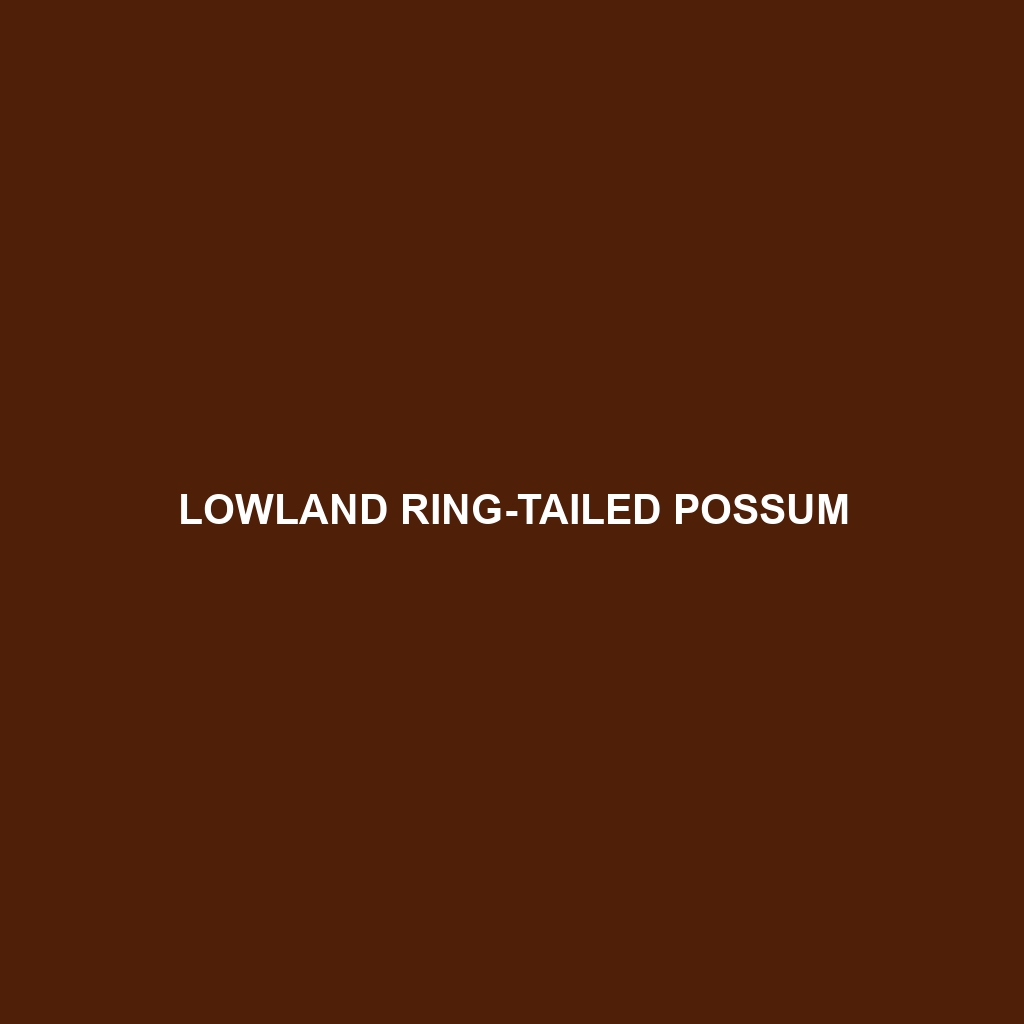Lowland Ring-tailed Possum
The Lowland Ring-tailed Possum (Pseudochirulus canescens) is a remarkable marsupial native to the lowland tropical rainforests of New Guinea. Known for its distinctive ringed tail and arboreal lifestyle, this possum plays a vital role in its ecosystem. Below, you will find a comprehensive description covering various aspects of this fascinating creature.
The Lowland Ring-tailed Possum is a nocturnal and arboreal marsupial, recognized by its prehensile tail adorned with white rings. This species thrives in the dense, humid lowland rainforests and is noted for its unique adaptations that allow it to navigate and thrive in the treetops.
Physical Characteristics
Size: The Lowland Ring-tailed Possum typically measures about 30-35 cm in body length with an additional 25-30 cm for the tail. Their weight ranges from 600 to 800 grams.
Coloration: Their fur is generally a mix of grey and brown with a whitish underside, which helps them blend into the forest canopy. The tail is notably prehensile, with alternating dark and light rings.
Special Features: Apart from their ringed tail, these possums have large eyes adapted for night vision, and their sharp claws are perfect for gripping branches. Their tail is highly flexible and helps them balance and maneuver through the trees.
Behaviors
Social Interactions: Lowland Ring-tailed Possums are relatively solitary creatures, though they may form small family groups. They communicate through a series of clicks, whistles, and other vocalizations.
Feeding Habits: These possums are primarily folivores, feeding on a variety of leaves, fruits, and flowers. Their diet plays a crucial role in seed dispersal and maintaining the health of their forest environment.
Ecological Roles: As both prey and seed dispersers, they are integral to the ecological balance of their habitat. They help in the regeneration of plant life, which in turn supports other wildlife.
Habitats and Adaptations
Habitat: The Lowland Ring-tailed Possum resides in the lowland tropical rainforests of New Guinea, typically at elevations below 1000 meters. They prefer dense canopy cover where they can find ample food and shelter.
Adaptations: Their prehensile tail and sharp claws are specialized for an arboreal lifestyle. Their nocturnal nature helps them avoid many predators, and their camouflaged fur provides additional protection.
Conservation Status
The conservation status of the Lowland Ring-tailed Possum is currently not well-documented, but habitat loss due to deforestation poses a significant threat. Efforts to conserve their rainforest habitats are crucial for their survival.
Fascinating Fun Facts
Unique Tail: The Lowland Ring-tailed Possum’s tail is not just for show; it acts like an extra limb, aiding in climbing and gripping branches.
Night Vision: Their large eyes are perfectly adapted for night vision, allowing them to forage efficiently after dark.
Longevity: In the wild, these possums can live up to 5-7 years, though their lifespan can be longer in captivity with proper care.
The Lowland Ring-tailed Possum is a unique and vital part of New Guinea’s rainforest ecosystem. Understanding and protecting this species helps ensure the continued health and diversity of their natural habitat.
